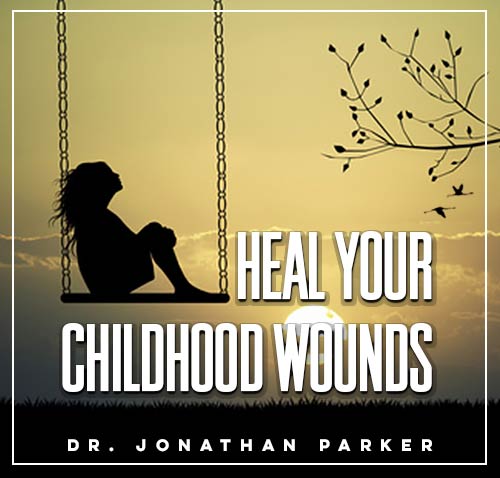Inner Child Restoration: Embrace Self-Acceptance

Before diving in, please note: This post is for informational purposes only. If you’d like to know more about how we approach topics, feel free to check out our friendly Disclaimer Page.
Hey there, amazing readers! 🖐️ Just a quick note: yes, we know there are a lot of ads here. Trust us, we get it—it’s not the prettiest look, but they help us keep this blog alive and kicking. Those pesky little ads cover the costs of all the behind-the-scenes magic, from hosting and tech stuff to creating content we hope you’ll love.
We’re committed to delivering quality posts, and your support (even just sticking around despite the ads) means everything to us. So, bear with us, and thanks for helping us keep the good vibes rolling. Now, on to the fun stuff! 😉
TRANSLATE BUTTON AT THE END OF THE ARTICLE
A Quick Overview
Inner child restoration is a process that involves reconnecting with and nurturing the wounded and neglected parts of ourselves that were formed during childhood.
It is about healing past traumas, understanding our emotional triggers, and embracing self-acceptance to live authentically.
By recognizing and acknowledging our inner child, we can begin to cultivate self-compassion, build a healthy self-image, and let go of shame and guilt.
This article will delve into the importance of self-acceptance in inner child restoration, and provide guidance on how to embrace self-acceptance in your healing journey.
Understanding Your Inner Child
Our inner child is the part of us that retains the memories, emotions, and beliefs from childhood.
It represents our true self, before we learned to conform to societal expectations and suppress our emotions.
Understanding your inner child involves acknowledging the experiences and feelings that shaped you in your early years, and recognizing how these experiences continue to influence your thoughts and behaviors in adulthood.
By connecting with your inner child, you can begin to heal past wounds and cultivate a sense of self-compassion.
The Importance of Self-Acceptance
Self-acceptance is the foundation of inner child restoration.
It involves embracing all aspects of yourself, including your flaws, vulnerabilities, and imperfections.
When you practice self-acceptance, you are able to acknowledge and validate your emotions without judgment or criticism.
This allows you to develop a deep sense of self-worth and self-love, which are essential for healing childhood wounds and building a healthy self-image.
Self-acceptance also enables you to live authentically and confidently, without the need for external validation or approval.
Recognizing Emotional Triggers
Emotional triggers are situations, events, or interactions that evoke strong emotional reactions based on past experiences.
These triggers are often rooted in childhood traumas or unresolved issues, and can cause us to react in ways that are disproportionate to the present situation.
By recognizing your emotional triggers, you can gain insight into the deep-seated beliefs and emotions that are driving your reactions.
This awareness allows you to respond to triggers more consciously and compassionately, and to heal the underlying wounds that are causing the emotional reactivity.
Healing Childhood Wounds
Healing childhood wounds is a crucial step in inner child restoration.
It involves revisiting and processing past traumas, hurts, and neglect that may have been inflicted during childhood.
By acknowledging and validating these experiences, you can release the emotional pain and patterns that have been holding you back.
Healing childhood wounds requires self-compassion, patience, and a willingness to confront difficult emotions.
Therapy, journaling, and mindfulness practices can be helpful tools in the healing process, allowing you to create a safe space for emotional expression and release.
Embracing Vulnerability
Vulnerability is an essential aspect of self-acceptance and inner child restoration.
It involves allowing yourself to be open, authentic, and emotionally exposed, without fear of judgment or rejection.
By embracing vulnerability, you can connect more deeply with your inner child and show up as your true self in relationships and interactions.
Vulnerability allows you to express your needs, emotions, and desires authentically, and to cultivate more meaningful connections with others.
It also enables you to release the masks and defenses that have been preventing you from fully embracing your true self.
Letting Go of Shame and Guilt
Shame and guilt are common emotions that stem from childhood experiences of rejection, criticism, or neglect.
These emotions can create deep-seated feelings of unworthiness, self-doubt, and self-criticism, which can hinder self-acceptance and inner child restoration.
By letting go of shame and guilt, you can release the self-imposed judgments and beliefs that are keeping you stuck in negative patterns.
Forgiving yourself and others, practicing self-compassion, and reframing negative self-talk are effective strategies for letting go of shame and guilt and cultivating self-acceptance.
Discover "SUPERFOODS: The Key to Health and Balance🥗" 🌿🌺
Practicing Self-Compassion
Self-compassion is a key component of inner child restoration.
It involves treating yourself with kindness, understanding, and compassion, especially in times of struggle or emotional distress.
By practicing self-compassion, you can soothe your inner child’s fears, insecurities, and traumas, and offer yourself the same love and care that you would give to a beloved friend.
Self-compassion involves acknowledging your pain without judgment, validating your emotions without criticism, and comforting yourself with words of kindness and reassurance.
This practice helps to foster a sense of inner peace, resilience, and self-acceptance.
Building a Healthy Self-Image
Building a healthy self-image is essential for inner child restoration and self-acceptance.
It involves cultivating a positive and realistic view of yourself, based on your strengths, values, and accomplishments.
By acknowledging your worth and inherent goodness, you can counteract negative self-talk and self-doubt, and develop a sense of confidence and self-assurance.
Building a healthy self-image also involves setting boundaries, practicing self-care, and surrounding yourself with supportive and nurturing relationships.
By valuing and honoring yourself, you can create a strong foundation for inner child restoration and emotional well-being.
Cultivating Forgiveness
Forgiveness is a powerful tool for healing childhood wounds and embracing self-acceptance.
It involves letting go of resentment, anger, and bitterness towards yourself and others, and offering compassion and understanding instead.
By cultivating forgiveness, you can release the emotional burdens and grudges that are weighing you down, and create space for healing and growth.
Forgiveness is not about condoning harmful behavior or forgetting past hurts, but about freeing yourself from the emotional shackles that are preventing you from moving forward.
By forgiving yourself and others, you can open your heart to self-acceptance, love, and inner peace.
Connecting with Your Inner Child
Connecting with your inner child is a transformative practice that involves nurturing, validating, and comforting the wounded parts of yourself.
It requires creating a safe, loving, and accepting space within yourself where your inner child can express emotions, needs, and desires freely.
By connecting with your inner child, you can build a deeper relationship with yourself, develop a greater sense of self-compassion, and heal past wounds and traumas.
Visualization, meditation, and inner child work are powerful techniques for connecting with your inner child and fostering a sense of wholeness and integration.
Nurturing Your Inner Child
Nurturing your inner child is an ongoing process of self-care, love, and validation.
It involves listening to your inner child’s needs, fears, and desires, and responding with empathy, compassion, and understanding.
By nurturing your inner child, you can provide the love, safety, and acceptance that may have been lacking in your childhood, and create a sense of emotional security and well-being.
Nurturing your inner child also involves setting boundaries, practicing self-soothing techniques, and engaging in activities that bring joy, comfort, and healing.
By prioritizing your inner child’s well-being, you can cultivate a deep sense of self-acceptance and wholeness.
Living Authentically in Self-Acceptance
Living authentically in self-acceptance is the ultimate goal of inner child restoration.
It involves embracing your true self, vulnerabilities, and imperfections, and showing up authentically in all areas of your life.
By living authentically, you can honor your needs, values, and emotions, and express yourself confidently and courageously.
Authentic living requires self-awareness, self-compassion, and a willingness to be vulnerable and open.
When you live authentically in self-acceptance, you can experience greater freedom, joy, and fulfillment, and create meaningful connections with others based on honesty, trust, and love.
Conclusion
Embracing self-acceptance is a powerful and transformative journey that involves healing childhood wounds, recognizing emotional triggers, and nurturing your inner child with compassion and love.
By practicing self-compassion, forgiveness, and vulnerability, you can build a healthy self-image, cultivate a sense of inner peace, and live authentically in self-acceptance.
Connecting with your inner child, letting go of shame and guilt, and embracing vulnerability are essential steps in the process of inner child restoration.
By prioritizing your emotional well-being and self-acceptance, you can create a life filled with love, compassion, and authenticity.

The Enlightenment Journey is a remarkable collection of writings authored by a distinguished group of experts in the fields of spirituality, new age, and esoteric knowledge.
This anthology features a diverse assembly of well-experienced authors who bring their profound insights and credible perspectives to the forefront.
Each contributor possesses a wealth of knowledge and wisdom, making them authorities in their respective domains.
Together, they offer readers a transformative journey into the realms of spiritual growth, self-discovery, and esoteric enlightenment.
The Enlightenment Journey is a testament to the collective expertise of these luminaries, providing readers with a rich tapestry of ideas and information to illuminate their spiritual path.
Our Diverse Expertise 🌟
While our primary focus is on spirituality and esotericism, we are equally passionate about exploring a wide range of other topics and niches 🌍📚. Our experienced team is dedicated to delivering high-quality, informative content across various subjects ✨.
To ensure we provide the most accurate and valuable insights, we collaborate with trusted experts in their respective domains 🧑🏫👩🏫. This allows us to offer well-rounded perspectives and knowledge to our readers.
Our blog originally focused on spirituality and metaphysics, but we’ve since expanded to cover a wide range of niches. Don’t worry—we continue to publish a lot of articles on spirituality! Frequently visit our blog to explore our diverse content and stay tuned for more insightful reads.








